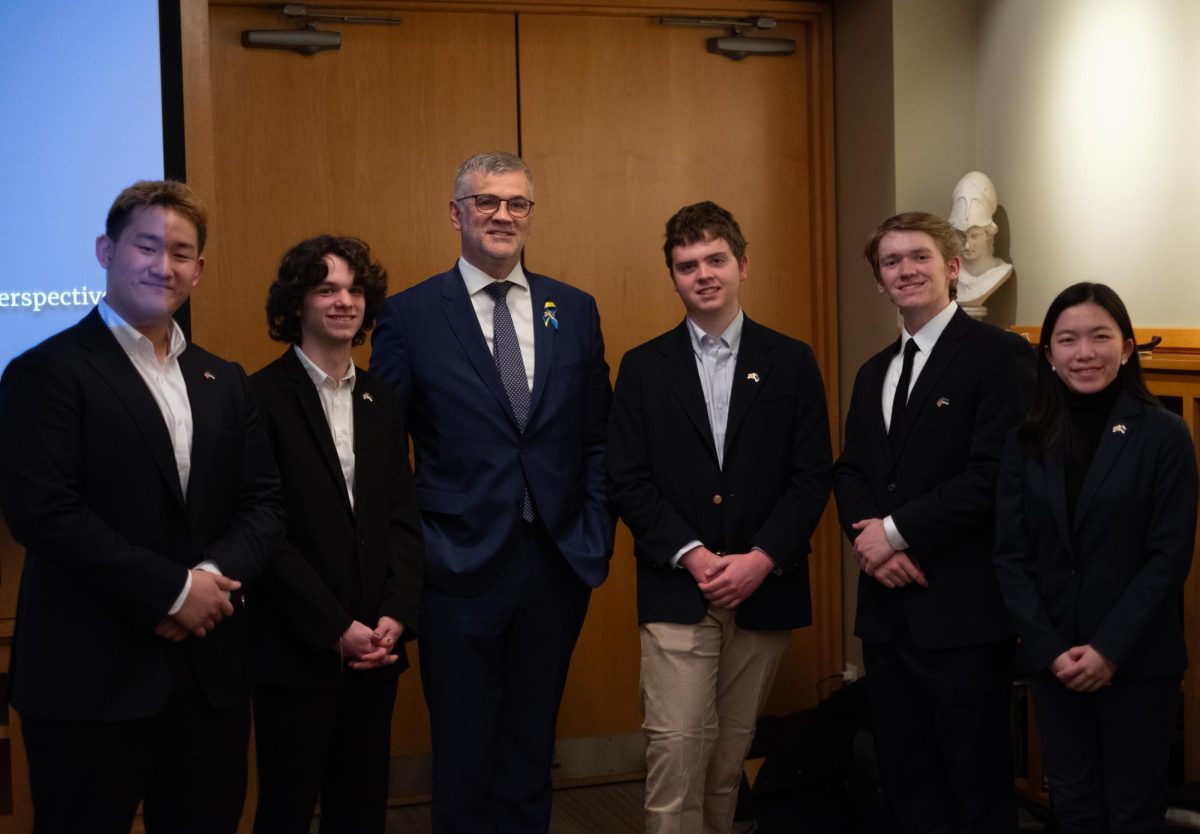Experimental pop guru and critic favorite Noah Lennox—better known as Panda Bear—released his sixth studio album last Friday to hungry fans and non-fans alike.
Lennox has explored a plethora of styles throughout his solo musical career, which often served as a foil for his main act—the experimental pop outfit Animal Collective—and their releases over the years.
Paired with Dave Portner (stage name Avey Tare), the duo worked together on a number of albums, ranging from fairytale synth-pop on the duo’s (later-credited Animal Collective’s) first release, 2000’s Spirit They’re Gone, Spirit They’ve Vanished, to stripped-down acoustic freak folk on their monumental 2004 album Sung Tongs.
As Animal Collective progressed and redefined much of the music world, Lennox mirrored large parts of that growth. The band ventured into experimental folk-pop on their 2005 album Feels, psych-rock on 2007’s Strawberry Jam, and sampledelia on undoubtedly their most critically acclaimed and widespread release, 2009’s Merriweather Post Pavilion.
One of the most striking advances Animal Collective made throughout the ‘00s is their mastery of sampling—taking what so many hip hop artists had done throughout the years (Lennox has even credited Madlib as one of his influences) and flipping it on its head.
But arguably even more effectively than the band did it, Lennox showed off his sampling- and producer-chops on his groundbreaking 2007 album, Person Pitch. At just seven songs and 45 minutes (including two twelve-minute tracks), the LP was shaped and reshaped by Lennox between Animal Collective tours from 2004–2006, around when the band was experimenting with their Strawberry Jam material live. Lennox redefined the art of the sample, building winding, extravagant and sonically dense songs about brotherhood, antidepressants and family.
There isn’t anything to be said about Person Pitch that hasn’t already been said. It was like a musical meteor hitting earth.
The last two album releases under the Panda Bear name—2011’s Tomboy and 2015’s Panda Bear Meets the Grim Reaper (aka PBVSGR)—saw Lennox shift from psychedelic into dub, constructing more danceable beats but with much of the same gravity as before.
And on his latest release, Buoys, Panda Bear takes everything that gave his previous releases weight and boils it down to its bare essentials. And that’s not necessarily a bad thing.
Clocking in at 31 minutes flat, Buoys is a quick listen—a sprint rather than a marathon—and Lennox sheds the endless layering of his previous releases for a more stripped-down approach: barebones, ambient sampling; filtered and distorted vocals; and an acoustic guitar as, often, the rhythm-keeper.
Rusty Santos—famed Sung Tongs producer—helps Panda Bear here take his first journey into the lower frequencies. When played on a large/nice/expensive enough speaker, the album becomes something else completely, adding new beauty and detail to the already-abstract, enigmatic album. Bass hits resound and low-frequency swells wobble and pair almost perfectly with Lennox’s voice and instrumentals.
Lennox released two singles for Buoys: November’s oft-slammed “Dolphin” and February’s generally-well-received “Token.”
The former didn’t really seem to sit well with anybody except the hardcore fans—those who, like me, tend to consider the beauty (before listenability) of Lennox’s releases. Many called the spacey guitar uninspired and the frequent water-splash-noises irritating, while pointing to his distorted, autotuned lyrics as evidence of falling into mainstream trends Animal Collective and Panda Bear fans so despise. Perhaps, many stans thought, Panda Bear was becoming too weird even for them.
But those judgments completely miss the track’s point. Panda Bear’s albums’ opening tracks have often defined and set their paths and styles. On Person Pitch, it was the grand, booming, sample-heavy “Comfy in Nautica”; on Tomboy, “You Can Count on Me,” which established the themes of trust and family he’d later explore on the album; on PBVSGR, it’s “Sequential Circuits,” an albeit slower track (though all of his openers are, really) that marries the harmonies of Tomboy with the sampledelia of Person Pitch.
Each one serves as a microcosm for the style and themes explored on each album.
“Dolphin” is Buoys’ bold first declaration: On the track, he proclaims “I am taking a new path, and this is the direction I will be going with it.” It’s his water-testing thesis statement of the album, immediately showing to the listener what he’s doing with his music: minimalism, (a new kind of) vocal distortion and, as with earlier Animal Collective releases, tons of water noises.
“Token” was less controversial, further developing the sound of “Dolphin” while keeping things more upbeat. (The song’s music video features an uncouth Dean Blunt, in contrast to the track itself.)
Lennox continues his varied, here-there style throughout the rest of the album with tracks ranging from the trance-like beat of “Cranked” to the dub-heavy, PBVSGR-referential “Master.”
The crying sample at the beginning of Buoys’ seventh track, “Inner Monologue,” hearkens back to Lennox’s 12-minute “Bros” as the reserved, contemplative vocals remind of something off Animal Collective’s 2005 album Feels—maybe even “Banshee Beat,” one of the band’s classics and one style they would, unfortunately, not pursue again. Until, maybe, now.
“Home Free,” the closing track, sounds like the photo-negative version of “Dolphin,” but this time, with a more consistent, upbeat tempo and the water noises replaced by something akin to a plunger. But it adds without being distracting.
Buoys is different and, understandably, may not sit well with many old-school Panda Bear or Animal Collective fans. But, more than anything, it follows up the monstrous Person Pitch, Tomboy and PBVSGR. And that’s a remarkable feat in itself.
9/10









